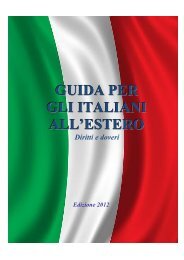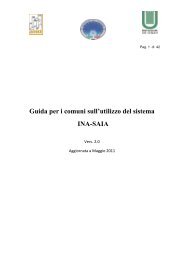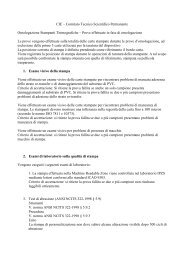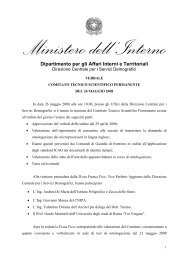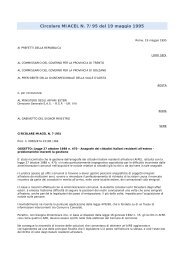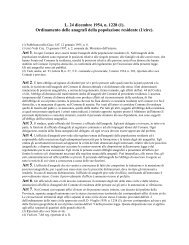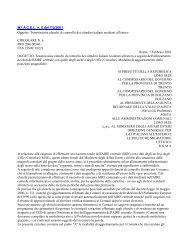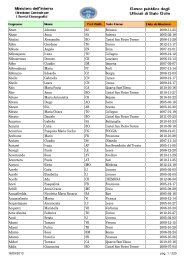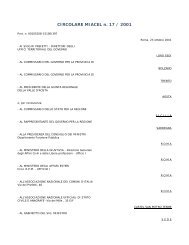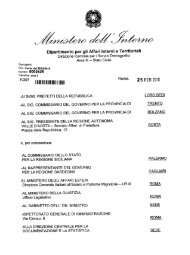C.I.E – Carta di Identità Elettronica Functional Specification Version 2.0
CIE - Functional Specification v 2.0
CIE - Functional Specification v 2.0
- No tags were found...
Create successful ePaper yourself
Turn your PDF publications into a flip-book with our unique Google optimized e-Paper software.
10. Data StructuresThe CIE holds data either in files, or in objects. The <strong>di</strong>fference between them lies in the logicalorganization and in the access mode.Files are organized in a file system, organized in a hierarchical tree structure.To access a file, it has to be selected (either implicitly or explicitly), and has then to become thecurrent file.Objects are referenced implicitly or explicitly by de<strong>di</strong>cated commands, do not need to be selected(actually they cannot be selected with a Select command).Some implementation may actually map objects onto internal files, that will be allocated in the filesystem, but nevertheless the access rules for those objects remain the same.File system organization, co<strong>di</strong>ng and access are regulated by [2], as described in the followingchapters.10.1 File CategoriesThe CIE file system is based on three categories of basic file components:The root of the file system, the Master File (MF),Directory files, denoted as de<strong>di</strong>cated files (DF),Generic data files, denoted as Elementary files (EF).The Master File (MF) is the root of the file system and is always the initial entry point to the filesystem. After a reset of the card, the MF is selected.The De<strong>di</strong>cated Files (DFs) are similar to Directories in tra<strong>di</strong>tional file systems.DFs can contain Elementary Files (EFs), and/or other DFs. The MF can be considered to be aspecial DF that contains all the files.The Elementary File (EF) is used for data storage. For this reason EFs are also referred to as datafiles. File access is similar to tra<strong>di</strong>tional file systems. To access a file (for rea<strong>di</strong>ng, writing, or anyother operation), it has to be selected.10.2 Data File TypesThe following structures of EF are defined:Transparent structure:The EF is seen at the interface as a sequence of bytes.CIE - <strong>Functional</strong> <strong>Specification</strong> v <strong>2.0</strong> -Page 22/76



